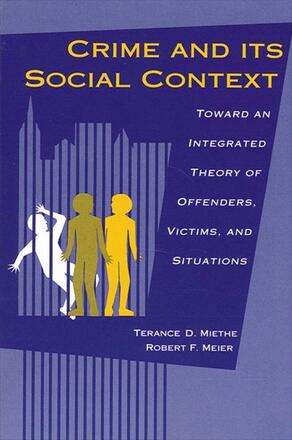
Crime and its Social Context
Toward an Integrated Theory of Offenders, Victims, and Situations
Alternative formats available from:
Description
Theories of criminality and theories of victimization have traditionally been discussed as though they bore no relationship to one another. Yet, a complete explanation for crime must examine both the decision to engage in crime by an offender and the everyday actions of ordinary citizens that increase vulnerability to criminals. The integration of these approaches yields testable models that have greater predictive power than could be obtained by looking only at models of offenders or models of victim behavior. A more general perspective that accounts for both the decision to engage in crime and the selection of particular crime targets is developed and tested.
Terance D. Miethe is Associate Professor in the Department of Criminal Justice at the University of Nevada, Las Vegas. Robert F. Meier is Professor in the Department of Sociology at Iowa State University.
Reviews
"The authors deal with the difficult topic of integrating theories for a better explanation of crime. What especially interests me is the inclusion of theories dealing with motivation and opportunities. I think that this is an essential area of inquiry if criminology is to make headway in its attempts to explain and predict crime. I liked their hypothesis on the conditional nature of relationships between guardianship, target attractiveness and risk of victimization. " — Christopher Birkbeck, University of New Mexico